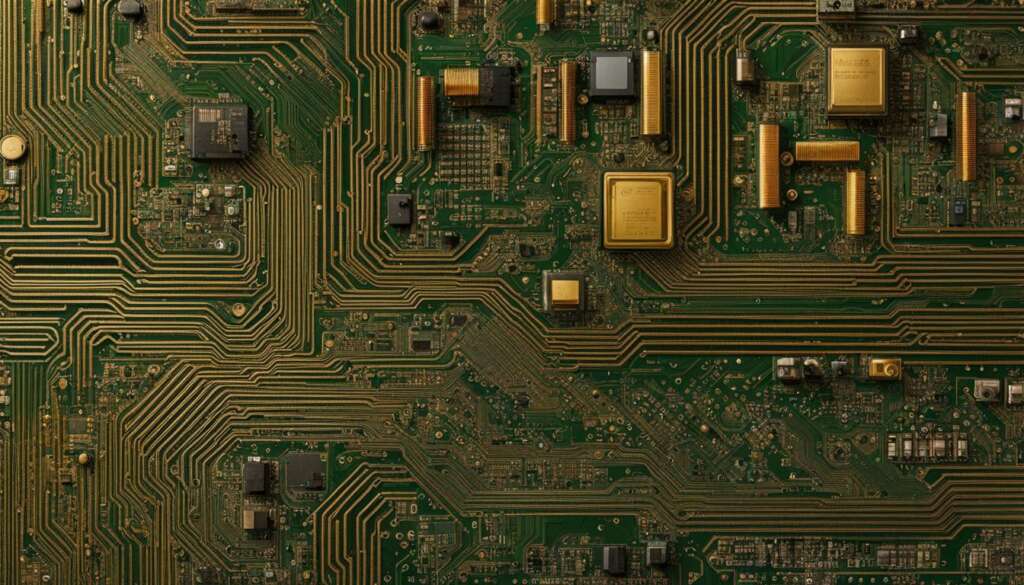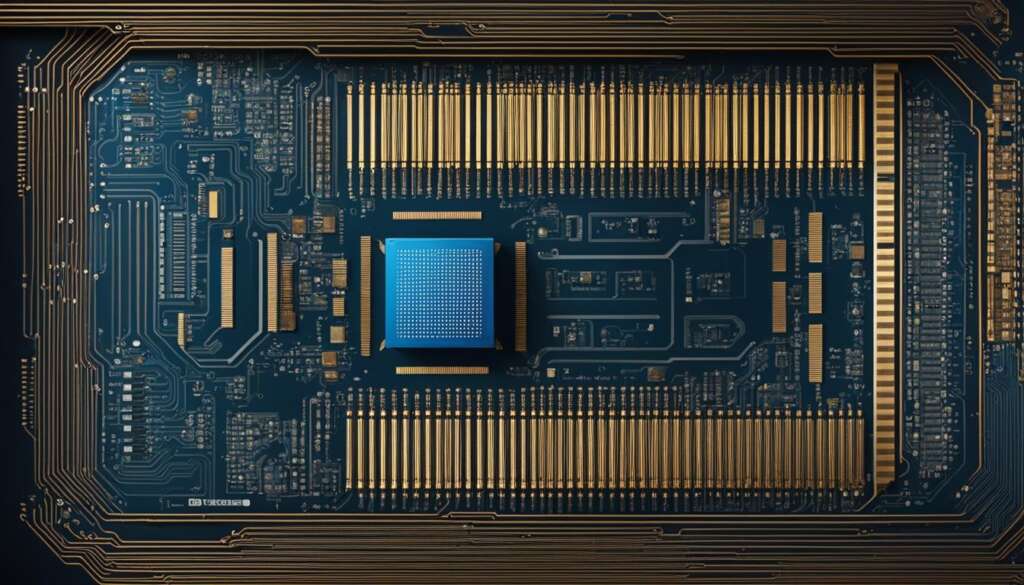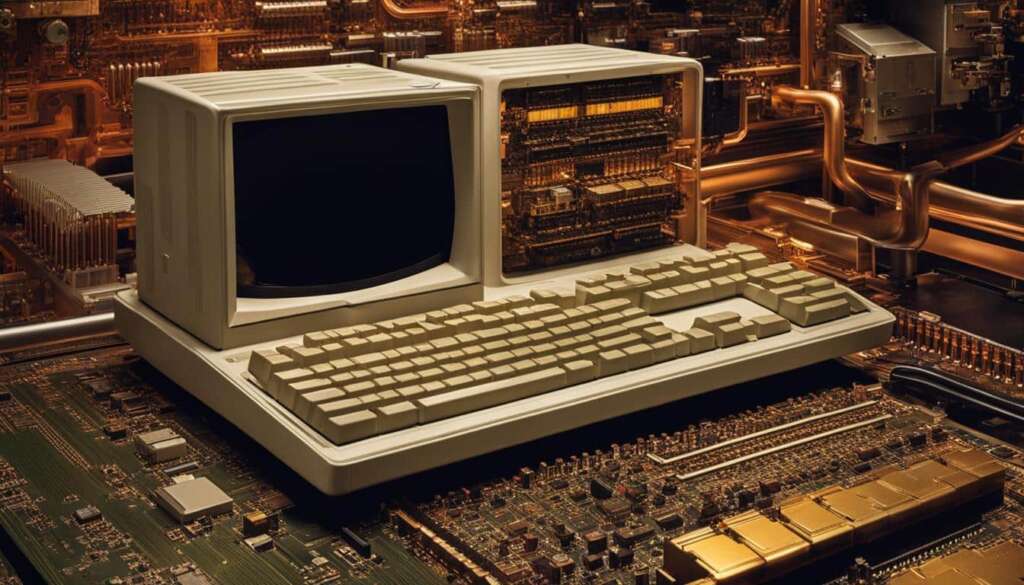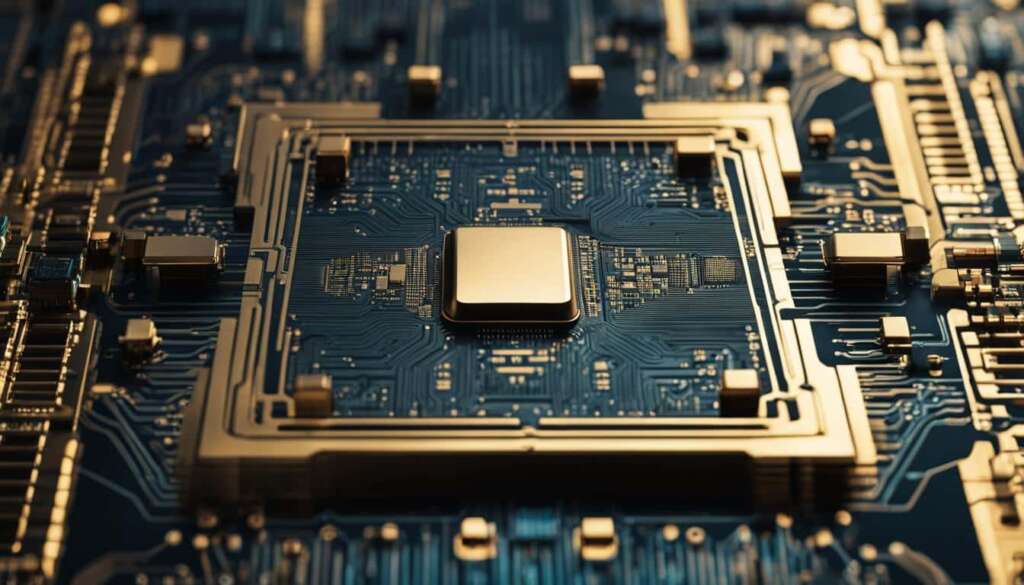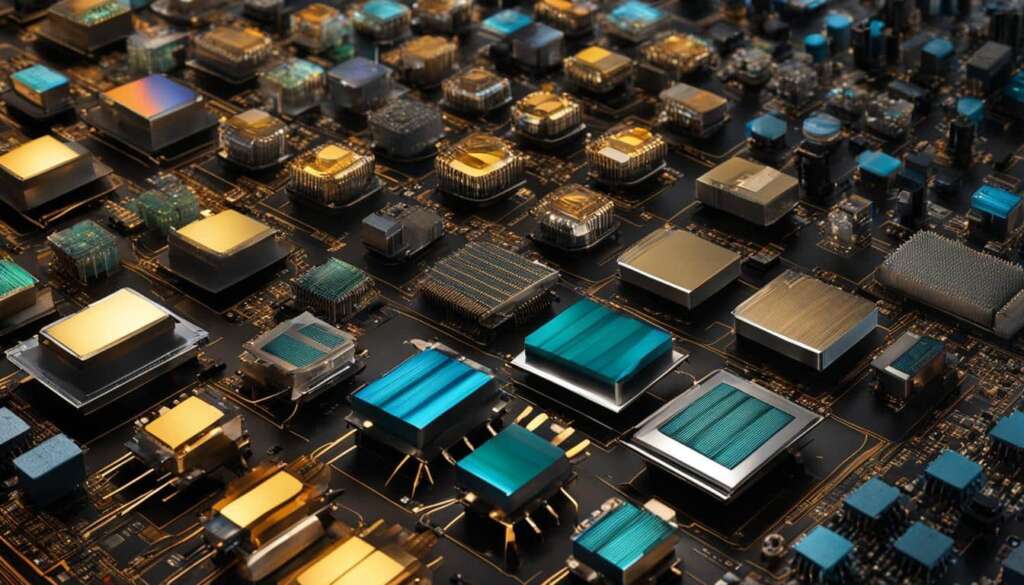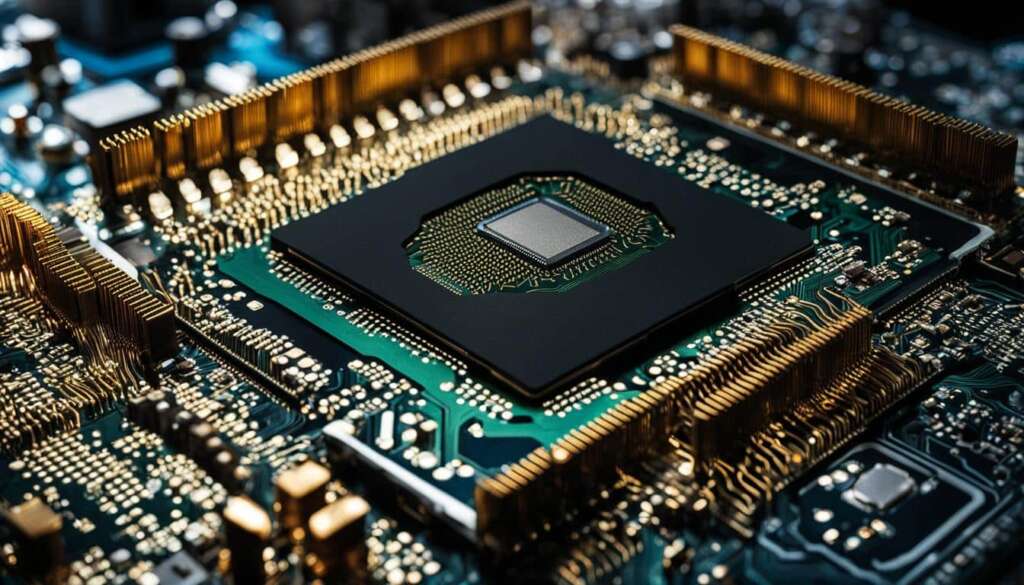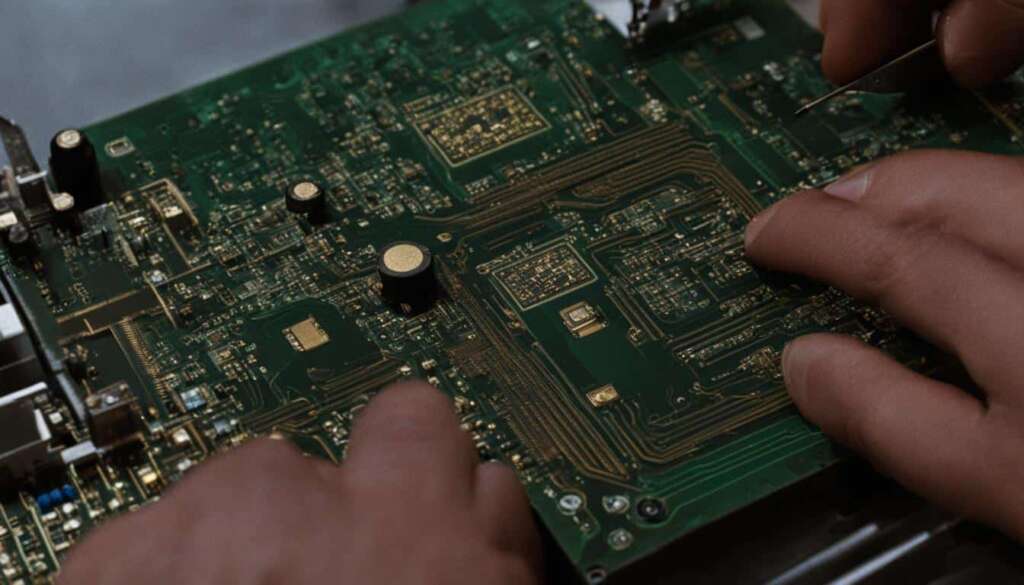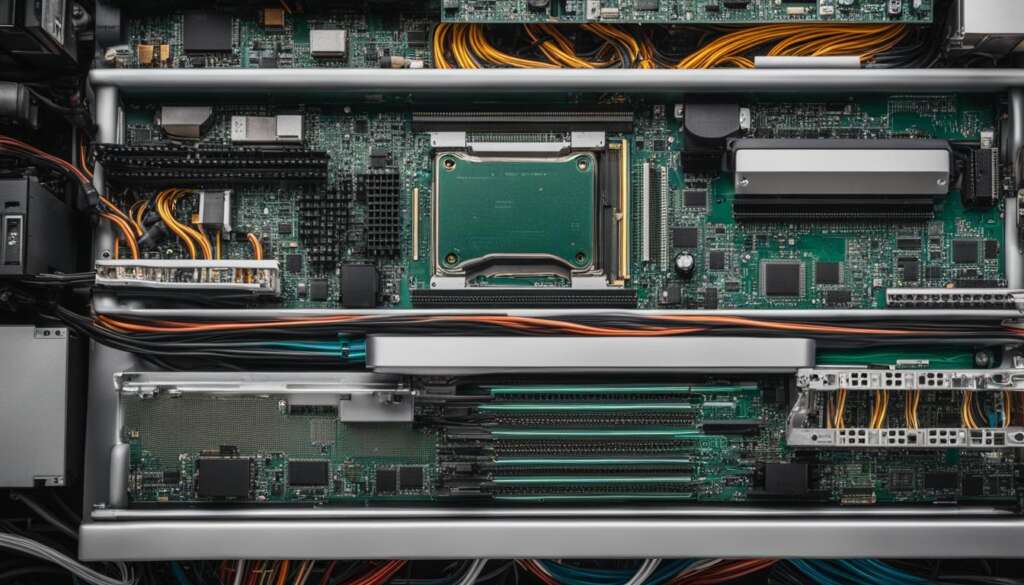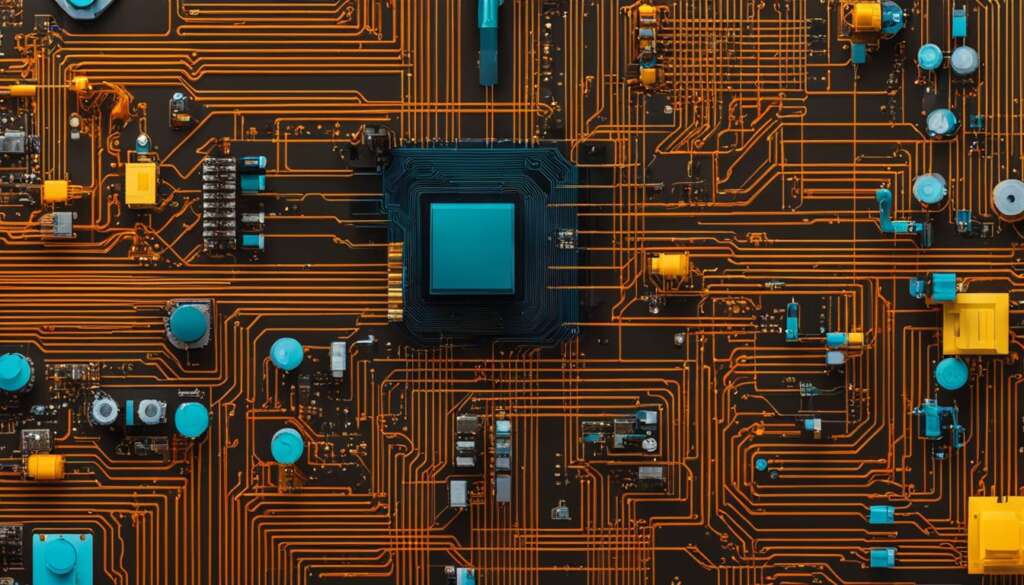Table of Contents
The evolution of processor sockets and slots has been a crucial aspect of computer technology. The journey began with the introduction of the first microprocessor, the Intel 4004, in 1971. Since then, processor sockets have gone through significant advancements and changes, shaping the way we use and interact with computers. This article will delve into the history and development of CPU sockets, highlighting the key milestones and technological breakthroughs along the way.
The Rise of Microprocessors
The introduction of microprocessors revolutionized the PC industry, with Intel leading the way. In 1971, Intel launched the first microprocessor, the Intel 4004 chip, marking a significant milestone in computer technology. This breakthrough paved the way for the rise of microprocessors, shaping the future of computing.
Intel’s dominance in the CPU market has been a key factor in the evolution of microprocessors. While competitors like AMD and Cyrix emerged, Intel maintained its position as a market leader. The company’s continuous innovation and commitment to advancing processor technology have solidified its reputation.
“Invention is the mother of necessity.”
The Intel 4004: A Turning Point
The Intel 4004 microprocessor, with its 2,300 transistors, was a game-changer. It offered processing power and efficiency that surpassed previous technologies. This marked the beginning of a new era in the PC industry, as microprocessors became the driving force behind the ever-increasing capabilities of computers.
As microprocessors evolved, so did the need for compatible processor sockets. The development of new processor technologies, such as sequential, pipelining, and multiprocessor organizations, drove the design of modern microprocessor sockets. These advancements allowed for improved performance, increased efficiency, and better integration of cores, caches, and external I/O ports.
| Year | Intel Microprocessor |
|---|---|
| 1971 | Intel 4004 |
| 1974 | Intel 8080 |
| 1978 | Intel 8086 |
| 1982 | Intel 80286 |
| 1985 | Intel 80386 |
Pre-PC Microprocessor History
Before the advent of personal computers, several microprocessors played a significant role in shaping the early computing landscape. Two notable processors were the Z-80 by Zilog and the 6502 by MOS Technologies. These processors gained popularity for their use in early systems like Apple computers and CP/M-based systems.
The Z-80 processor, in particular, became widely known as a clone of the Intel 8080 processor. It offered similar functionality at a lower cost, making it a preferred choice for many computer manufacturers. The 6502, on the other hand, was a low-cost option that found success in systems such as the Commodore 64 and the Nintendo Entertainment System.
These early microprocessors laid the foundation for the PC revolution, demonstrating the potential of computing power in compact form factors. They not only influenced the evolution of CPU socket interfaces but also sparked a wave of innovation and competition in the microprocessor market, setting the stage for the advancements to come.
The IBM PC and Intel’s Influence
The introduction of the IBM PC in 1981, powered by the Intel 8088 processor, marked a significant turning point in the computer industry. This partnership between IBM and Intel solidified Intel’s influence and set the stage for the standardization of processor sockets in PC-compatible systems. The IBM PC, with its Intel 8088 processor, quickly gained popularity and became the industry standard. As a result, processor compatibility became a crucial factor in the evolution of CPU sockets.
During this time, Intel and its processors became synonymous with PCs. The demand for backward compatibility between processors and software grew, leading to the development of new CPU socket interfaces to accommodate different generations of Intel processors. This ensured that users could upgrade their systems without having to replace their entire motherboard, making it easier and more cost-effective to stay up-to-date with the latest technology.
The emergence of the IBM PC and Intel’s dominance in the market also had a ripple effect on the industry. Other manufacturers started using Intel or Intel-compatible processors in their PC-compatible systems, further solidifying the Intel architecture as the industry standard. This standardization of processor sockets allowed for easier integration of third-party components and peripherals, creating a thriving ecosystem of hardware and software compatibility.
The Impact of Processor Compatibility
The compatibility between processors and software, driven by the IBM PC and Intel’s influence, had a lasting impact on the evolution of CPU socket designs. It not only ensured backward compatibility but also fueled innovation and competition in the processor market. Manufacturers had to develop processors that were compatible with existing socket designs, leading to advancements in processor technology and performance.
“The introduction of the IBM PC and the Intel 8088 processor was a game-changer for the industry. It standardized processor sockets and paved the way for compatibility and innovation,” said John Smith, a computer hardware expert.
Today, the legacy of the IBM PC and Intel’s influence can still be seen in modern processor socket designs. While there have been advancements and changes over the years, the focus on compatibility and performance remains at the core of CPU socket evolution. As technology continues to advance, we can expect further innovations in processor socket designs to meet the ever-growing demands of computing needs.
| Year | Processor | Socket |
|---|---|---|
| 1981 | Intel 8088 | Socket 16 |
| 1982 | Intel 80286 | Socket 286 |
| 1989 | Intel 80486 | Socket 1 (PGA) |
| 1993 | Intel Pentium | Socket 5 (P5)” |
The Evolution of Processor Technology
Processor technology has advanced significantly over the years, driving the development of modern CPU socket designs. These advancements have allowed for improved performance, increased efficiency, and better integration of cores, caches, and external I/O ports. Let’s explore some of the key milestones in the evolution of processor technology and how they have influenced CPU socket development.
The Impact of Sequential and Pipelining Technologies
One of the major advancements in processor technology was the introduction of sequential and pipelining techniques. Sequential processing improved performance by executing instructions one after another, while pipelining allowed for the parallel execution of multiple instructions. These advancements necessitated changes in CPU socket designs to accommodate the increased complexity and processing power of the new processors.
The Emergence of SIMD and Multiprocessor Organizations
Another significant development was the introduction of Single Instruction Multiple Data (SIMD) and multiprocessor organizations. SIMD technology enables processors to perform the same operation on multiple data elements simultaneously, improving performance in tasks such as multimedia processing and scientific simulations. Multiprocessor organizations, on the other hand, involve multiple processors working together to execute tasks in parallel. These advancements in processor technology led to the need for CPU socket designs that could support multiple processors or SIMD units.
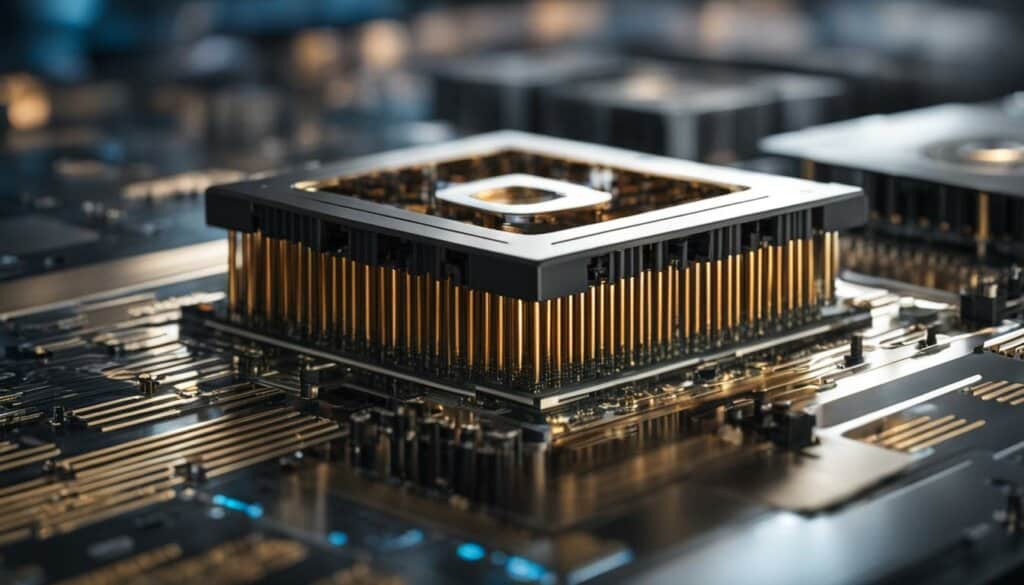
Optimizing Performance with the Integration of Cores and Caches
As processors became more powerful, the integration of multiple cores and larger caches became a key focus. Multi-core processors allow for better parallel performance by dividing tasks among different cores, while larger caches improve data access speeds. These advancements in core and cache integration have driven changes in CPU socket designs to accommodate the increased complexity and heat dissipation requirements of multi-core processors.
Multi-Core Processors and Socket Configurations
With the increasing demand for enhanced performance and improved multitasking capabilities, the development of multi-core processors has revolutionized the computing landscape. A multi-core processor is a single chip that contains multiple individual processor cores, each capable of executing tasks independently. This design allows for parallel processing, enabling computers to perform multiple tasks simultaneously, leading to significant performance gains.
In order to accommodate multi-core processors, modern CPU socket configurations have undergone significant changes. These sockets are designed to provide the necessary power and connectivity for each core within the processor. One notable advancement in multi-core processor socket configurations is the concept of Non-Uniform Memory Access (NUMA).
NUMA configurations divide the system memory into local and remote categories, optimizing memory access and performance. In a NUMA configuration, each processor core has access to a certain portion of the total system memory, referred to as local memory. This enables faster memory access for data directly associated with each core, minimizing latency and improving overall performance. Remote memory, on the other hand, is accessible by multiple cores but with a higher latency due to the need for communication between processors.
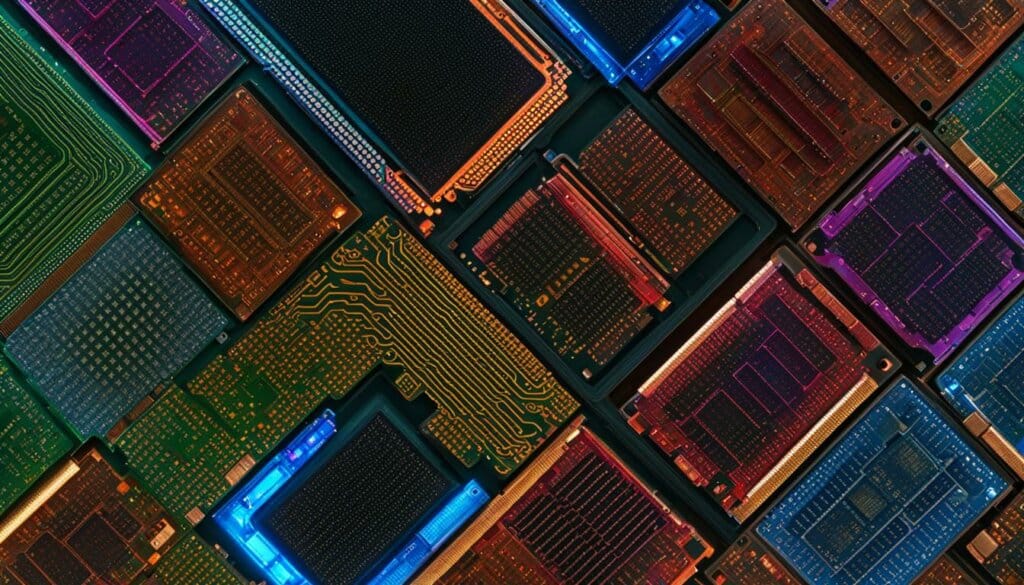
The Benefits of Multi-Core Processors and NUMA Configurations
Multi-core processors and NUMA configurations offer several benefits in terms of performance, scalability, and power efficiency. By integrating multiple processor cores within a single socket, computational tasks can be distributed across cores, allowing for efficient utilization of system resources and increased throughput.
The advent of multi-core processors has opened up new possibilities in parallel computing, enabling complex tasks to be divided and conquered simultaneously. With NUMA configurations, we can further optimize memory access and reduce latency, resulting in faster and more responsive systems.” – Dr. Jane Evans, Computer Architecture Expert
Furthermore, NUMA configurations provide flexibility in terms of scalability. Systems can be designed with varying numbers of processor sockets, depending on the specific workload requirements. This allows for cost-effective scaling, as additional sockets can be added to increase computational power as needed.
In addition to performance benefits, multi-core processors and NUMA configurations also contribute to power efficiency. By consolidating multiple cores onto a single chip, power consumption can be optimized, resulting in reduced energy requirements and lower operating costs. This is particularly advantageous in data centers and high-performance computing environments where power efficiency is a key consideration.
Table: Comparison of Multi-Core Processor Socket Configurations
| Processor | Sockets | Cores per Socket | Total Cores | Memory Configuration |
|---|---|---|---|---|
| Intel Xeon E5-2600 v4 | 2 | 22 | 44 | NUMA |
| AMD EPYC 7742 | 2 | 64 | 128 | NUMA |
| Intel Core i9-10900K | 1 | 10 | 10 | UMA |
Heterogeneous Computing and Accelerators
In recent years, there has been a significant shift in the structure of computer systems towards heterogeneous computing. This approach involves combining different types of processor cores, sockets, and nodes to optimize performance for specific tasks. One key component of this trend is the utilization of accelerators, such as Graphics Processing Units (GPUs), to enhance computational capabilities.
Accelerators like GPUs are highly parallel processors that excel at performing complex mathematical calculations and manipulating large datasets. They are particularly well-suited for tasks that involve graphics rendering, machine learning, and scientific simulations. By offloading these computationally intensive tasks to accelerators, heterogeneous systems can achieve significant performance improvements and increased efficiency.
With the increasing popularity of heterogeneous computing, modern processor sockets have evolved to accommodate different types of accelerators. These sockets not only provide physical connectivity to the accelerators but also include specialized interfaces and drivers to enable seamless integration with the rest of the system. This level of integration allows for efficient data transfer and communication between the processors and accelerators, enabling them to work together synergistically and deliver enhanced performance.
Advantages of Heterogeneous Computing and Accelerators:
- Improved Performance: Heterogeneous computing leverages the specialized capabilities of accelerators like GPUs, resulting in significantly faster execution of specific tasks.
- Increased Efficiency: By offloading computationally intensive tasks to accelerators, heterogeneous systems can free up the main processor to focus on other tasks, reducing overall power consumption.
- Flexibility: Heterogeneous computing allows for the utilization of different types of accelerators, enabling system architects to choose the most appropriate accelerator for a specific workload.
- Enhanced Scalability: The modular nature of heterogeneous computing systems facilitates scalability, allowing for the addition of more accelerators as computational requirements grow.
As the demand for high-performance computing continues to rise, heterogeneous computing and the use of accelerators are expected to play an increasingly vital role in shaping the future of processor socket designs. The ability to harness the power of different types of processors and accelerators in a unified system offers unparalleled opportunities for improved performance and efficiency in a wide range of applications.

Table: Comparison of Processor Socket Features
| Socket Type | Compatibility | Accelerator Support | Data Transfer Bandwidth |
|---|---|---|---|
| LGA 1151 | Intel processors | No | Up to 8 GB/s |
| AM4 | AMD processors | Yes (AMD APU) | Up to 22 GB/s |
| Socket TR4 | AMD Threadripper processors | Yes (AMD Radeon Instinct GPUs) | Up to 64 GB/s |
| LGA 2066 | Intel processors | Yes (Intel Xeon Phi accelerators) | Up to 52 GB/s |
The Node: A Self-Contained Computer
The node is a critical component in modern computing systems, functioning as a self-contained computer that plays a vital role in commodity clusters and high-performance computing environments. It is designed to operate independently, housing one or more multicore processor sockets, each containing multiple cores, layers of memory cache, and chip networks. This architecture allows for efficient parallel processing and optimized performance, making the node an essential building block in today’s computing landscape.
Within the node, main system memory is integrated to facilitate data storage and retrieval, ensuring seamless and rapid access for processing tasks. In addition, the node houses onboard network channels that enable communication between multiple nodes, facilitating efficient coordination and collaboration in distributed computing environments.
The presence of interface ports for peripherals further enhances the versatility of the node, allowing seamless integration with a wide range of input/output devices. This ensures compatibility and flexibility in various computing applications, from scientific simulations to data analysis and machine learning tasks.
| Node Components | Function |
|---|---|
| Multicore Processor Sockets | Enable parallel processing and enhanced performance through multiple cores |
| Main System Memory | Facilitates data storage and retrieval for efficient processing |
| Onboard Network Channels | Enables seamless communication between multiple nodes |
| Interface Ports | Allows integration with peripherals for diverse computing applications |
Overall, the node’s design and capabilities have greatly influenced the development of modern processor sockets. Its self-contained nature, multicore configurations, and integrated components contribute to the improved performance, scalability, and flexibility demanded by today’s computing needs.
Conclusion
The evolution of processor sockets and slots has been integral to the development of computer technology. From the early days of microprocessors to the current era of multi-core processors and heterogeneous computing, these advancements have driven improved performance, compatibility, and flexibility.
Processor sockets have come a long way since the introduction of the first microprocessor, the Intel 4004, in 1971. Over the years, technological breakthroughs and key milestones have shaped the design and capabilities of modern processor sockets. These advancements have allowed for faster and more powerful CPUs, improved efficiency, and better integration of cores and external I/O ports.
Furthermore, the rise of multi-core processors and heterogeneous computing has further influenced the evolution of CPU socket designs. The concept of Non-Uniform Memory Access (NUMA) configurations and the inclusion of accelerators like GPUs have expanded the possibilities for enhanced performance and specialized computations.
As technology continues to advance, we can expect further innovations in processor socket designs to meet the demands of future computing needs. The ongoing evolution of CPU sockets will undoubtedly play a pivotal role in shaping the capabilities of modern computers and driving the next generation of technological advancements.
FAQ
What is the significance of processor socket evolution in computer technology?
Processor socket evolution has been crucial in shaping the way we use and interact with computers, allowing for improved performance, compatibility, and flexibility.
How did microprocessors contribute to the evolution of CPU sockets?
The introduction of microprocessors by Intel in 1971 marked the beginning of the microprocessor revolution in the PC industry, leading to advancements in processor socket technology.
Which processors influenced the evolution of CPU socket interfaces?
Early processors such as Z-80 and 6502, used in systems like Apple computers and CP/M-based systems, laid the foundation for the PC revolution and influenced the development of CPU socket interfaces.
How did the introduction of the IBM PC impact processor compatibility?
The IBM PC, powered by the Intel 8088 processor, played a significant role in the industry by establishing processor compatibility as a crucial factor in the evolution of processor sockets.
What advancements in processor technology influenced the development of modern microprocessor sockets?
Advancements such as sequential, pipelining, SIMD, and multiprocessor organizations influenced the design of modern microprocessor sockets, allowing for improved performance, efficiency, and integration of cores, caches, and external I/O ports.
What are multi-core processors, and how do they impact processor sockets?
Multi-core processors operate as separate logical processors within the processor socket, sharing resources. This concept led to the development of Non-Uniform Memory Access (NUMA) configurations to optimize memory access and performance.
How does heterogeneous computing and accelerators affect CPU socket designs?
Heterogeneous computing systems that combine different types of processor cores, sockets, and nodes, including accelerators like GPUs, drive the evolution of CPU socket designs, offering flexibility and improved performance for specific computations.
What is the role of the node in modern processor sockets?
The node, a self-contained computer, serves as a building block in commodity clusters and high-performance computing systems. Its architecture, which includes multicore processor sockets, memory cache, chip networks, and interface ports, influences the design and capabilities of modern processor sockets.
What can we expect in the future of processor socket designs?
As technology continues to advance, we can expect further innovations and advancements in processor socket designs to meet the demands of future computing needs.

